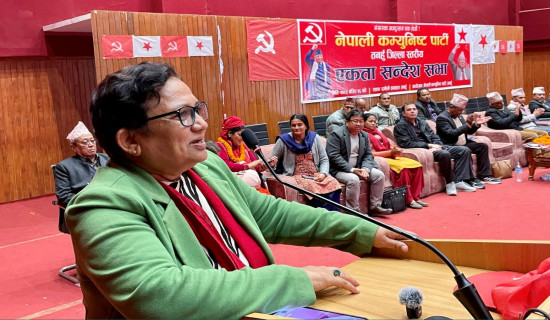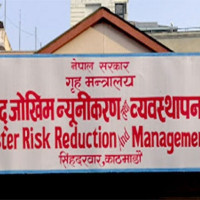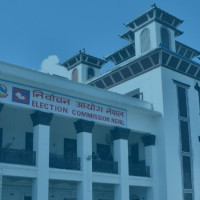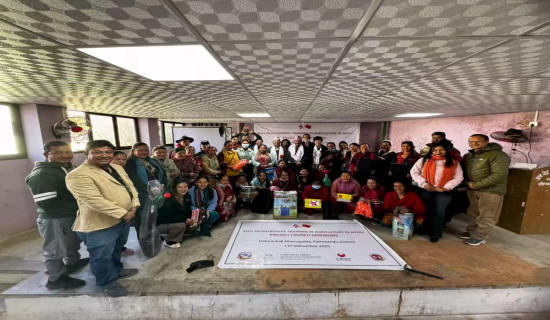- Friday, 12 December 2025
Revamp Medical Entrance Exam
Each year, over 14,000 Nepali students embark on the challenging journey of attempting undergraduate medical entrance exams. However, this path is fraught with uncertainties and challenges, from syllabus ambiguities to post-exam dilemmas. Despite significant milestones such as the formation of the Medical Education Commission (MEC) and the introduction of Common Entrance Exams (CEE), the landscape of medical entrance in Nepal remains riddled with complexities.
The absence of a specific microsyllabus and inconsistent adherence to grid lines provided by the MEC itself leave aspirants in the dark regarding exam content. Additionally, the lack of prescribed standard books exacerbates the challenge, allowing entrance mafias to exploit aspirants.
The inconsistency in exam dates adds to the stress of aspirants, with delays and irregularities hindering effective preparation. Despite the existence of an academic calendar, its publication is not timely, exacerbating psychological pressure on aspirants.
Aspirants face further challenges post-exam, with no provision to take question papers home and the absence of answer keys hindering self-assessment and feedback. The proliferation of memory-based questions further compromises exam integrity, favouring those with access to expensive question banks.
Delays in result publication and errors in result processing create uncertainty and frustration among aspirants. The cancellation of results due to OMR filling errors and the ineffectiveness of retotaling processes undermine the credibility of the exam system.
Securing scholarship seats remains elusive for many aspirants, with a selection ratio of only 2.5 per cent. The allocation of 45 per cent of reserved seats is marred by manipulation and the use of fake documents, while the absence of proper investigations further compounds the issue.
The prioritisation of foreign seats over local candidates and the absence of an auto-upgrade system for higher-priority colleges perpetuate disparities in college admissions. Low-ranking candidates exploit loopholes, further exacerbating the challenges faced by deserving candidates.
To address the uncertainties and streamline the undergraduate medical entrance exam process in Nepal, several solutions are proposed. First, there is a need to implement a chapter-wise microsyllabus, which involves developing a comprehensive and standardised syllabus with clear guidelines for preparation. This includes providing chapter-wise breakdowns to offer clarity and focus for aspirants.
Additionally, it is essential to ensure the availability of standardised reference books to aid aspirants in their preparation. By providing access to these resources, students can better prepare for the exams and have a more structured approach to studying.
Another proposed solution is the release of model questions with answer keys. This initiative aims to familiarise aspirants with the exam format and facilitate effective preparation. By practicing with model questions and having access to answer keys, students can gauge their understanding of the material and identify areas for improvement.
Furthermore, announcing exam dates well in advance is crucial. By publishing exam dates at least six months before the exam, aspirants have ample time to prepare adequately. This proactive approach reduces stress and allows students to plan their study schedules effectively.
Allowing aspirants to take the question paper home after the exam is another proposed solution. This provision enables students to review their performance and prepare for future attempts. Additionally, providing the answer key with the exam results allows aspirants to analyse their performance and identify areas for improvement.
Reevaluating the percentage of reserved seats is also essential to ensure greater access for deserving candidates while maintaining inclusivity. By rethinking the allocation of reserved seats, colleges can create a fairer and more equitable admissions process.
Lastly, reinstating the auto-upgrade system is proposed to ensure a fair and equitable allocation of college seats. This system would help prevent disparities in college admissions and ensure that deserving candidates have access to higher-priority colleges.
By addressing these challenges and implementing the proposed solutions, MEC can foster a more transparent, fair, and efficient system for undergraduate medical entrance exams in Nepal. This proactive approach will empower aspiring medical students to pursue their dreams with confidence and certainty, ultimately strengthening Nepal’s healthcare sector for the benefit of all.
(Tiwari is studying MBBS at Kathmandu University School Of Medical Sciences.)

















